Oh Mycelium! 9 Things You Can Do With Mushrooms Besides Eat Them
Mushrooms are quite divisive when it comes to eating them as food. People either love them or hate them. People that love mushrooms, rave about the endless recipe possibilities, citing the thousands of varieties and spend a lifetime trying to convert family and friends.A simple button mushroom or even a shitake may not pique the interest of a taste denier, but there is much more to mushrooms than pleasing your taste buds. Mushrooms (or more widely fungus mycelial networks) are the subject of many scientific interests and discoveries.
We’ve collated an illustrated guide to the myriad of uses – everyday, and spectacular – of mushrooms. Read and learn about their different uses so that you can preach at the dinner table the next time you’re chomping on that wild mushroom risotto…
Psilocybin (Magic Mushrooms)
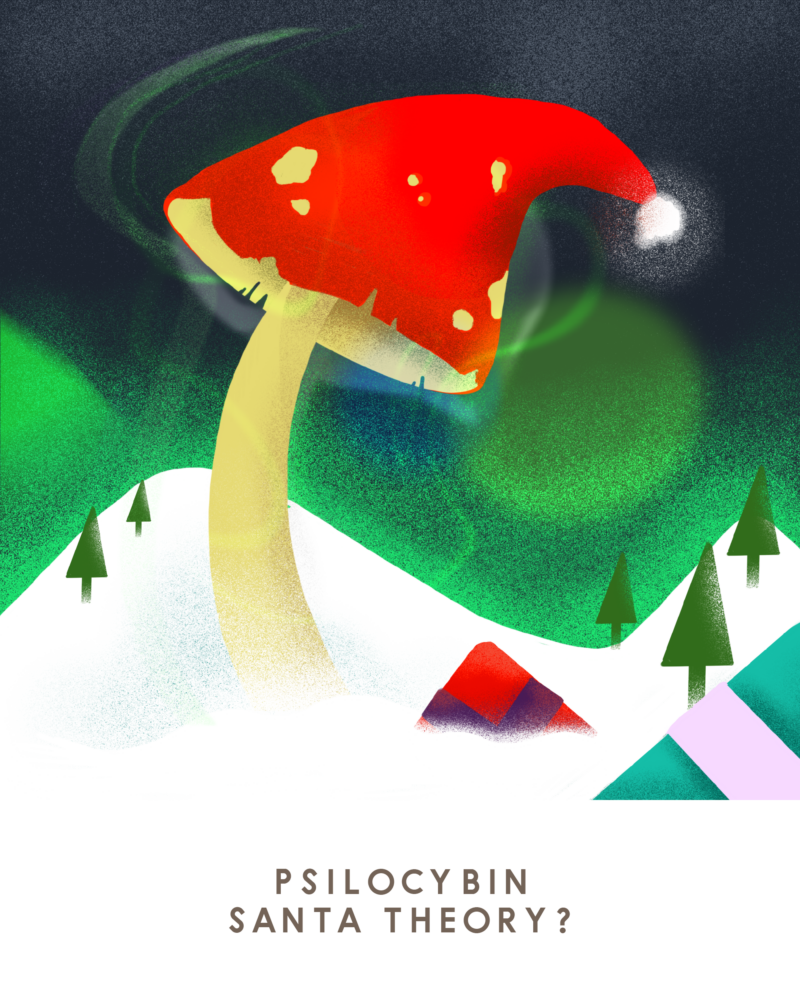
Ok, so let’s get a controversial one out of the way. Magic mushrooms (mushrooms containing varying strains of psilocybin) have hallucinogenic properties – psychedelics which can alter perception, mood and thought. Psilocybin is thought to boost the brain’s connectivity, syncing areas of the brain that would not normally communicate.
There are reservations about the safety of using these mushrooms and they are now considered a controlled substance in many countries, but there is also evidence of them having been used over centuries in multiple cultures, especially in religious ceremonies in Central America.
According to anthropologist John Rush, magic mushrooms may even explain Santa! He states that Shamans in Siberia used to bring gifts of mushrooms to households during winter. The ‘Spirit animals’ of these Shaman were – wait for it – reindeer.
The mushrooms in question were the classic white and red of Santa’s outfit, and ingesting these could possibly make you think the reindeer were flying…this may be a bit far fetched, but we love a tenuous link.
Complementary Cancer Therapy and Immunity Boosters
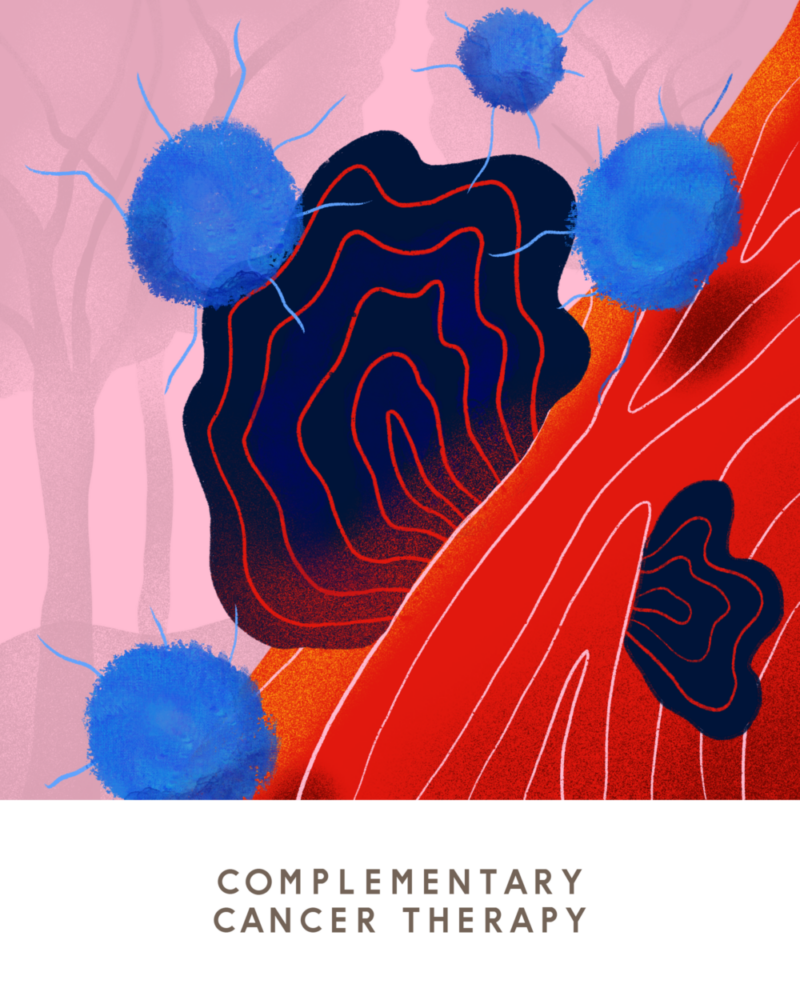
Mushrooms have been used in medicinal form for thousands of years, prized for their antimicrobial, anti-inflammatory, cardio-vascular-protective, antidiabetic and hepatoprotective properties.
In recent years, varieties of mushroom such as Turkey Tail have been found to have immune boosting properties that give some hope of them being effective in the fight against some cancers.
The research is still in question, but according to one 2014 review, it would appear that compounds called polysaccharopeptide (PSP) and polysaccharide-K (PSK) have potential to inhibit the growth of cancer cells.
Encouraging findings indeed. Who knows where the next decade or so of research might lead us?
Fertiliser and Fuel

Not mushrooms themselves, but rather the spent mushroom substrate. The mycelial and surrounding organic matter left after growing mushrooms, can be used as a good fertiliser!
Spent substrate can be used to feed and grow worms, which in turn are great for composting and general soil health. Japanese scientists have also discovered a way to produce a liquid hormone from this substrate, which helps to promote cucumber, tomato and soybean growth.
Mushroom substrate can also be used to produce biogas. It can sustain the long-term propagation of bacteria, which in turn create methane. It is thought that 3-5kg of substrate could create enough biogas to support the daily usage of an average sized family.
Cosmetics Enhancement
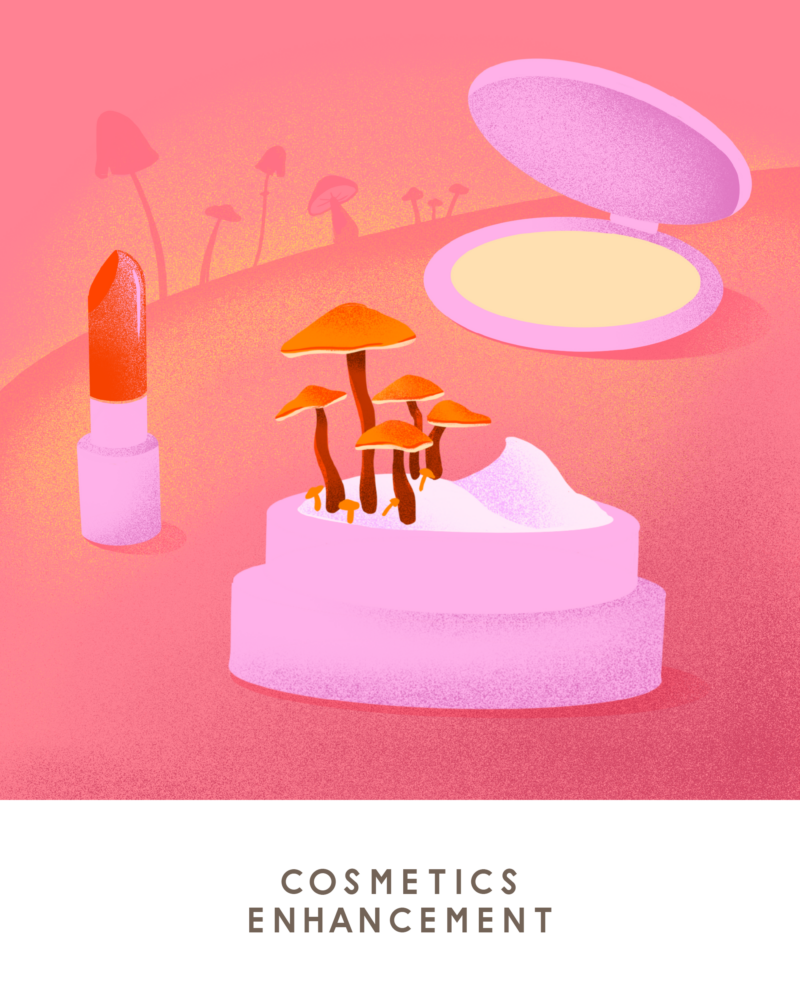
Using Ganoderma Lucidium (or Red Reishi) as an example, mushrooms can be used in cosmetics to supposedly combat:
- Skin ageing
- Hyperpigmentation
- Inflammation
Clothing and Leather Substitute
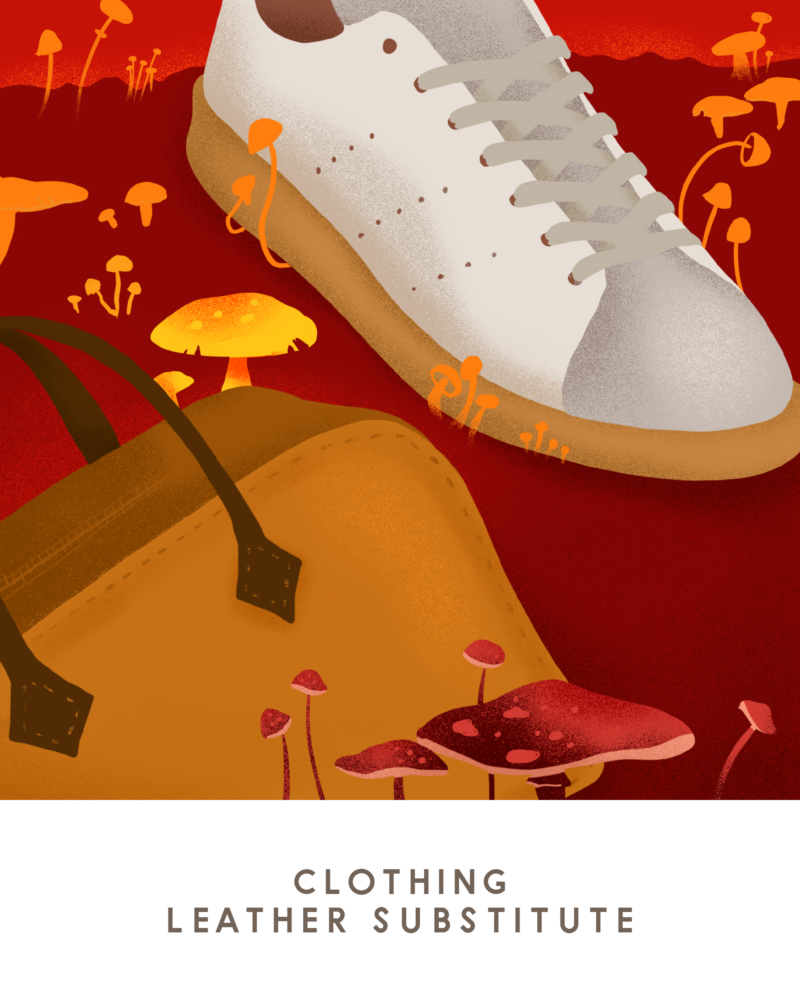
“Would you like a new bag?”
“Oh, I don’t have MUSHROOM left for anything else in my closet”…
Ok, so terrible jokes aside, you really can make bags and shoes and other garments out of mushrooms!
You may have heard of pineapple leather, and now there is mushroom leather, or muskin leather as it’s known. This eco-friendly alternative to animal derived leather is made from the mycelium of reishi and pearl oyster mushrooms, or the giant caps of Phellinus ellipsoideus, a variety of mushroom that feeds off trees in subtropical forests.
Mushroom fibre based textiles offer a super soft material, which also has the additional benefits of being antimicrobial, vegan and carbon neutral. An increasingly viable alternative garment material, mushroom leather has attracted the attention of fashion powerhouses such as Stella McCartney and Adidas.
Compostable Packaging
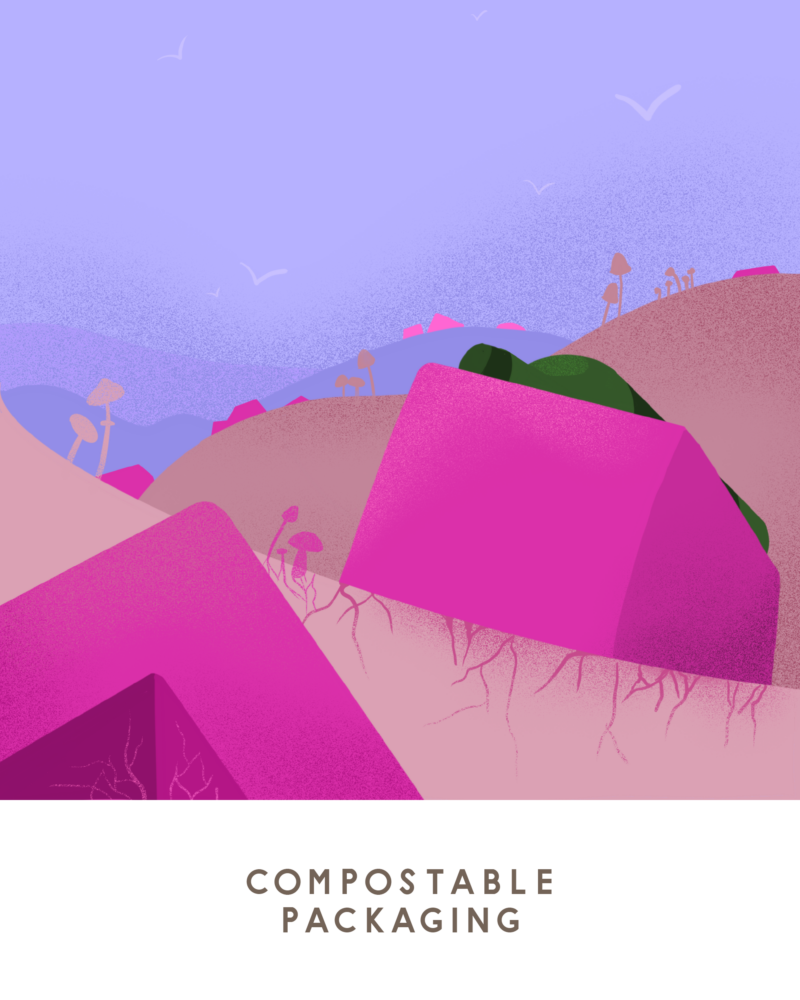
It is impossible to ignore the growing concern worldwide, for the amount of single use plastic waste and unwanted surplus packaging that goes into landfill every day. Scientists have been working tirelessly behind the scenes to try and find a solution to our waste pollution crisis. And mushrooms might just be the answer!
Unlike styrofoam for example, mushroom packaging consists of 100 percent biodegradable and renewable material that can be recycled directly in and by nature.
Mycelial matter can be grown within a matter of days, to provide competitively priced, water resistant and insulating packaging. This packaging is deemed completely safe for the packaging of food and can also break down and compost within 1-2 months.
Mushroom packaging is very versatile in regards to moulding to specific shapes and sizes, and is super lightweight.
What’s not to love?!
Furniture giants such as IKEA already use compostable mushroom packaging.
Construction and Building Materials
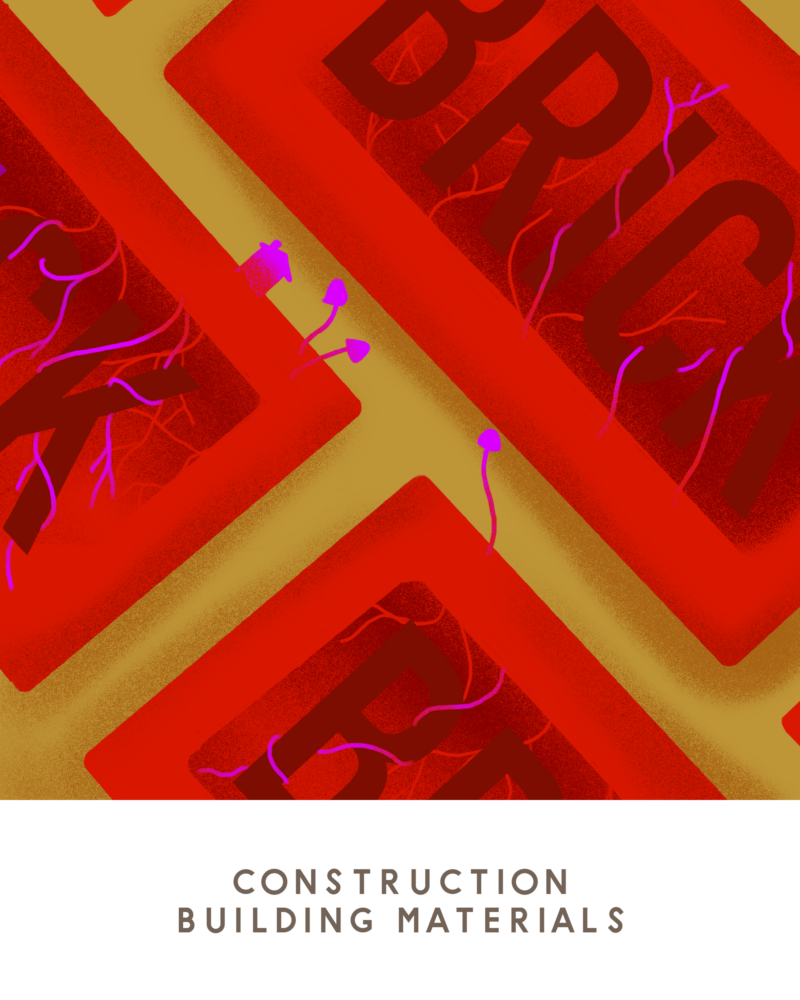
Harnessing the properties of mycelium again, it has now been found possible to “grow” living bricks that are as strong as concrete! Mushroom bricks are made by combining mycelium and chopped up corn husks
There is a lot of pressure on the construction industry as a whole to look at their carbon footprint and to invest in greener, more sustainable materials and processes. Concrete tops the list as an unsustainable material, using tonnes of energy and water to create it from raw materials.
Mushroom bricks may be the answer to replacing traditional building materials, now that they can be made as strong, cheap and quick to produce but easily broken down when no longer needed, without leaving a trace.
Mushroom Death Suits
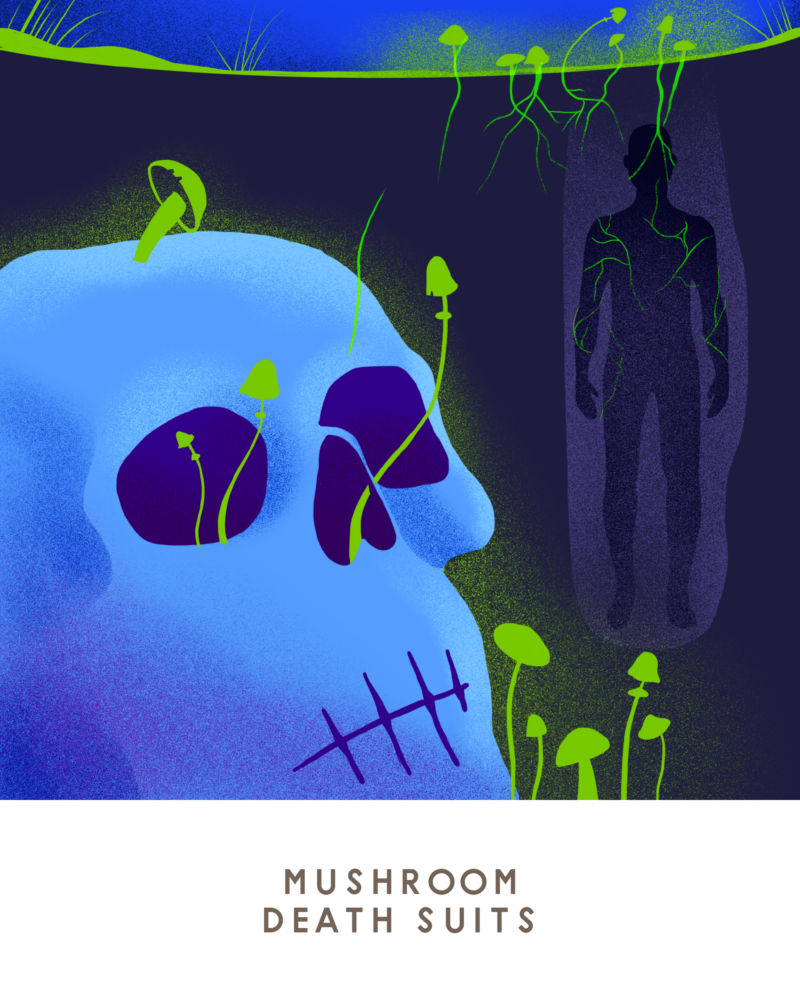
Death is a touchy subject. People don’t like to stray too much from tradition when it comes to considering what happens to us (our bodies) after we die.
There is much ceremony surrounding death and saying goodbye to loved ones, and we concentrate on almost preserving the bodies (unless cremated) in a fancy, expensive casket, dressed in their finest attire.
The reality is that when buried, we will eventually become part of the earth again.
Overcrowded cemeteries are becoming a large problem for densely populated areas. A need for space, but also a desire to ‘return to nature’ more quickly without leaving a footprint has spurred research into burial suits that will aid and speed the breakdown of the body into the soil.
Death suits made from mushroom spore-infused thread, will sprout mycelium which will hasten the breakdown of matter and digest the contents of the suit, leaving no trace and no toxins unlike traditional burial methods.
Portobello Battery

Ok, so this is like when we used a lemon as a battery in science at school yeah? Well, no.
Scientists have discovered that Portobello mushrooms can be used to make very good graphite alternative lithium-ion batteries that may have a better lifespan, and even get better with age!
The production of the batteries leaves out all of the harsh, corrosive chemicals such as hydrofluoric and sulphuric acids – negating hazardous waste. Best of all, these Portobello mushroom batteries will almost entirely biodegrade when disposed of.
——————————–
So the next time someone pulls a face when talking about mushrooms, remind them that they are magnificent, multi-purpose magic umbrellas of potential and they should watch this space.
Alright, that sounded a bit threatening and they may not be eating mushrooms any time soon, but they may well be living inside one or wearing them in the future!
You’re more than welcome to use our illustrations for your own content, all we ask is that you credit CDA.eu and link to this article as the original source.
